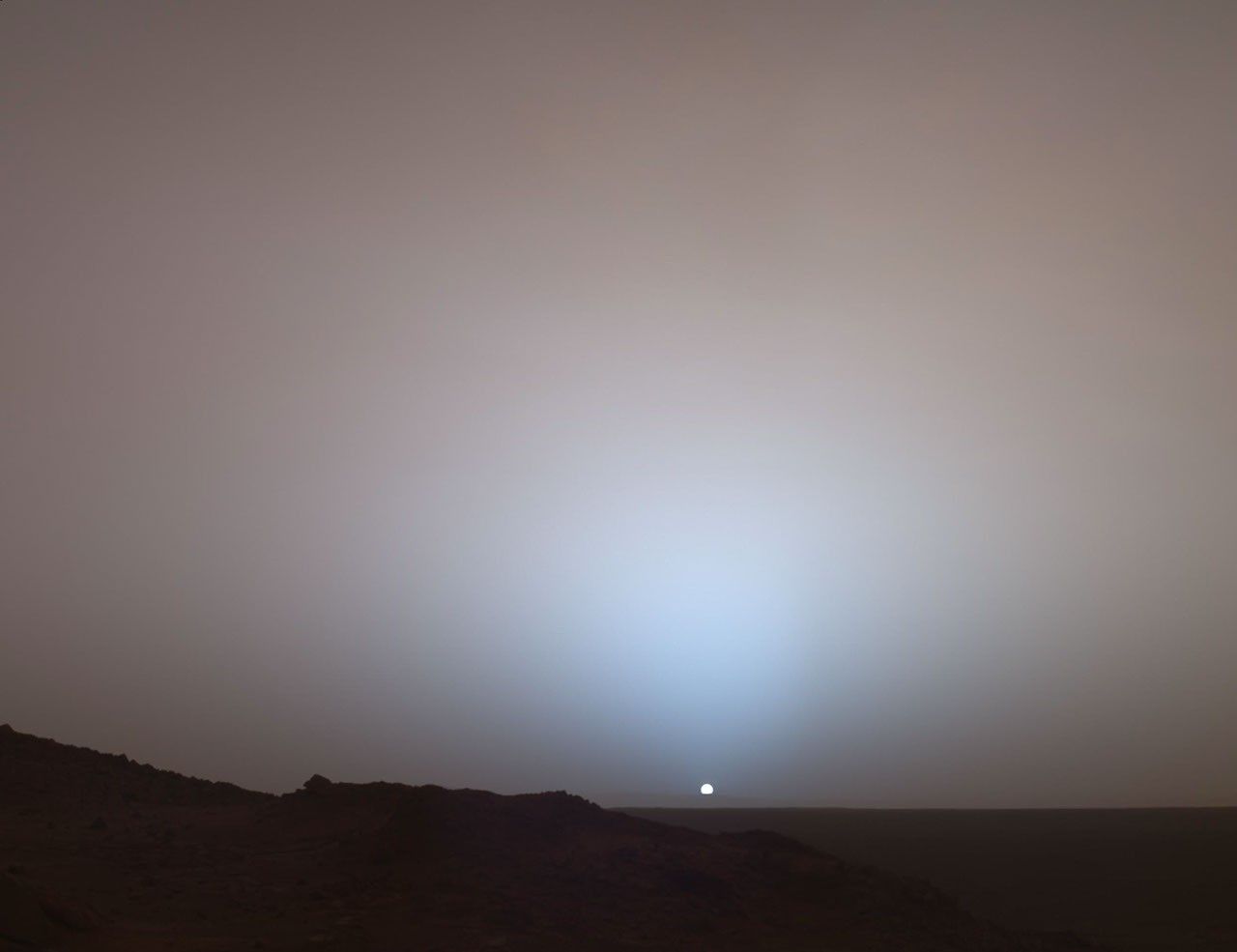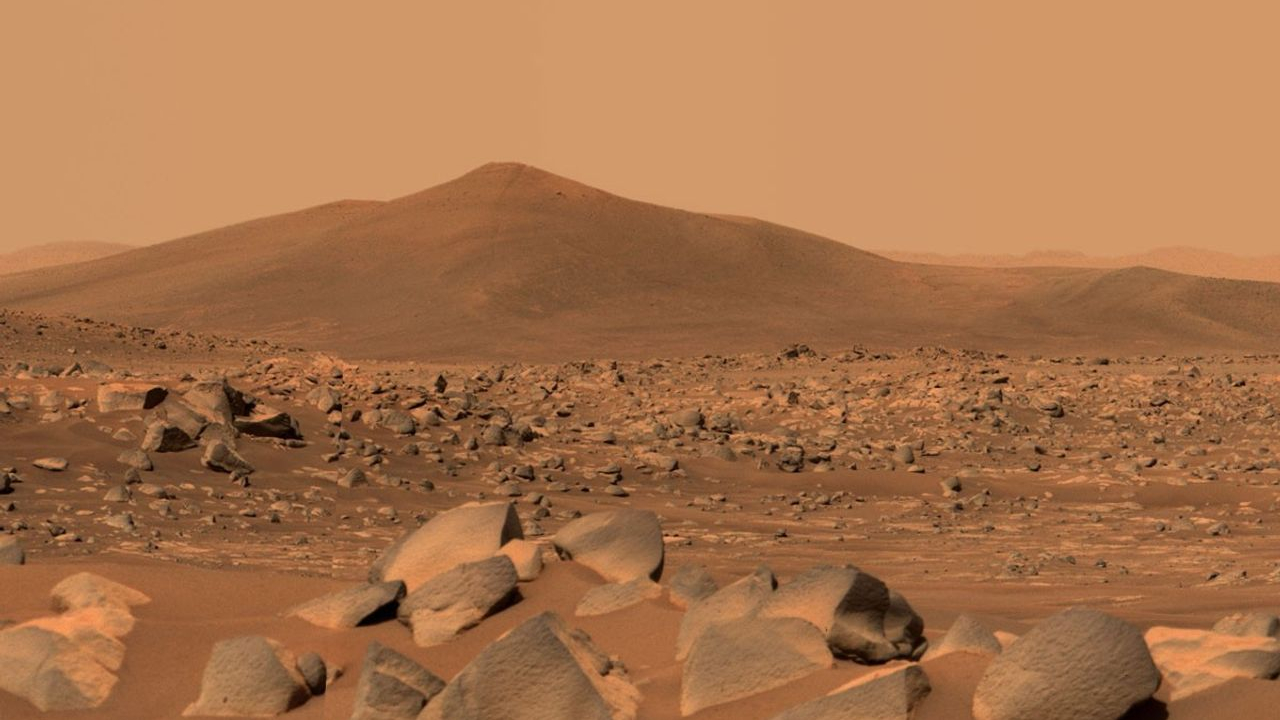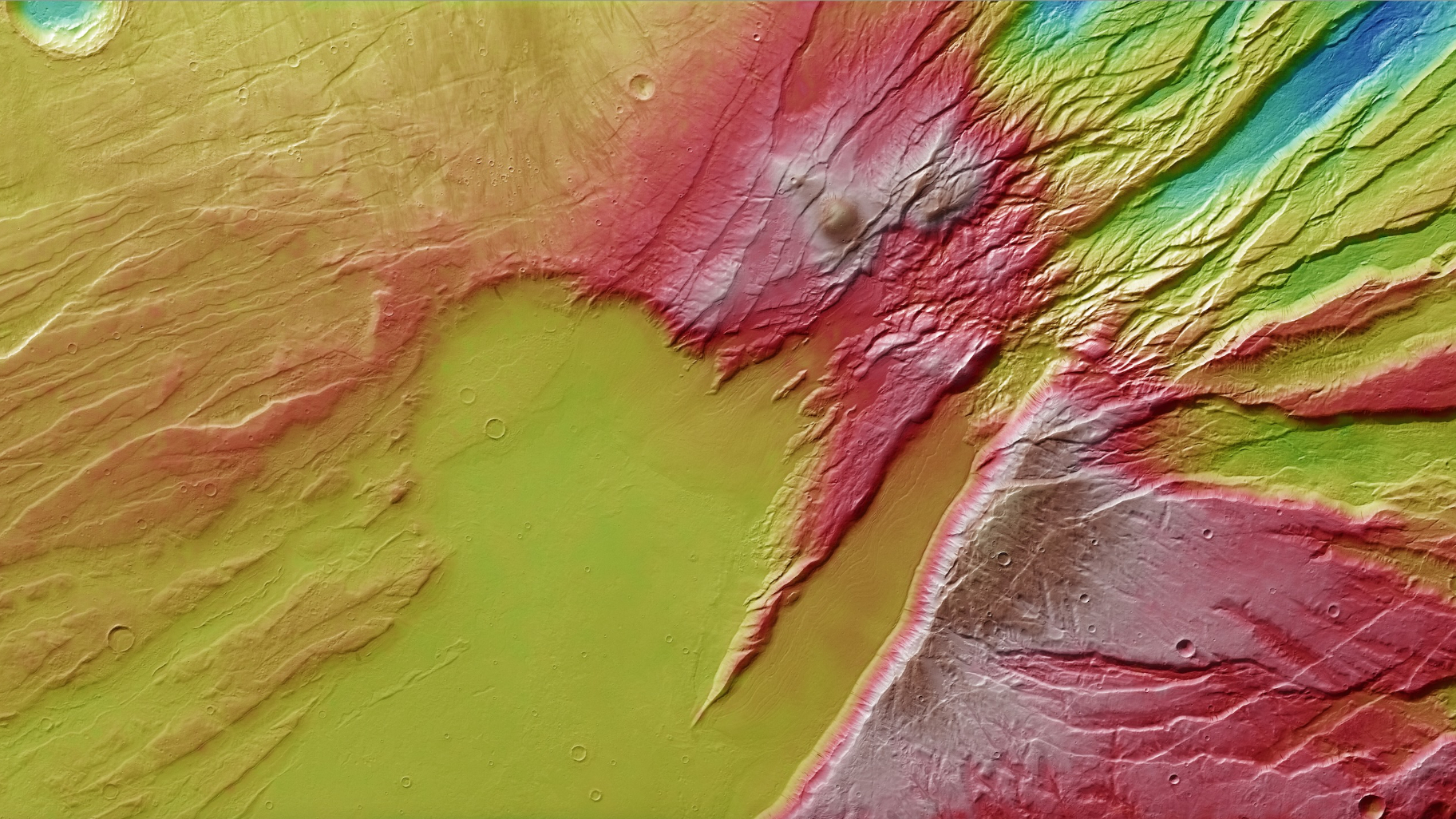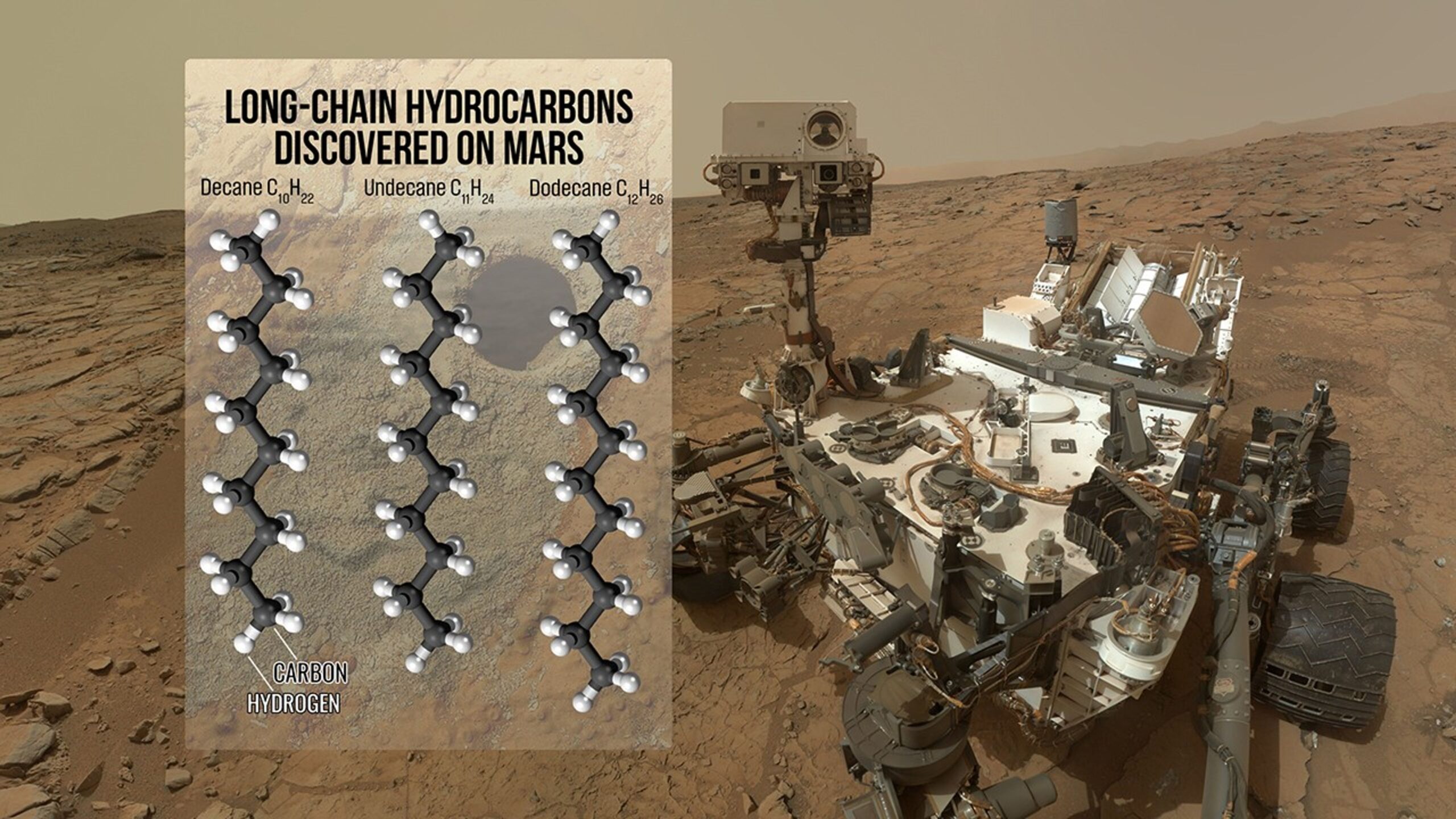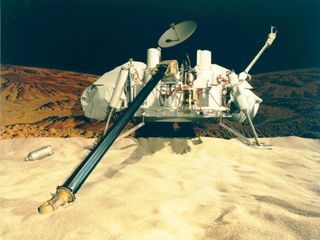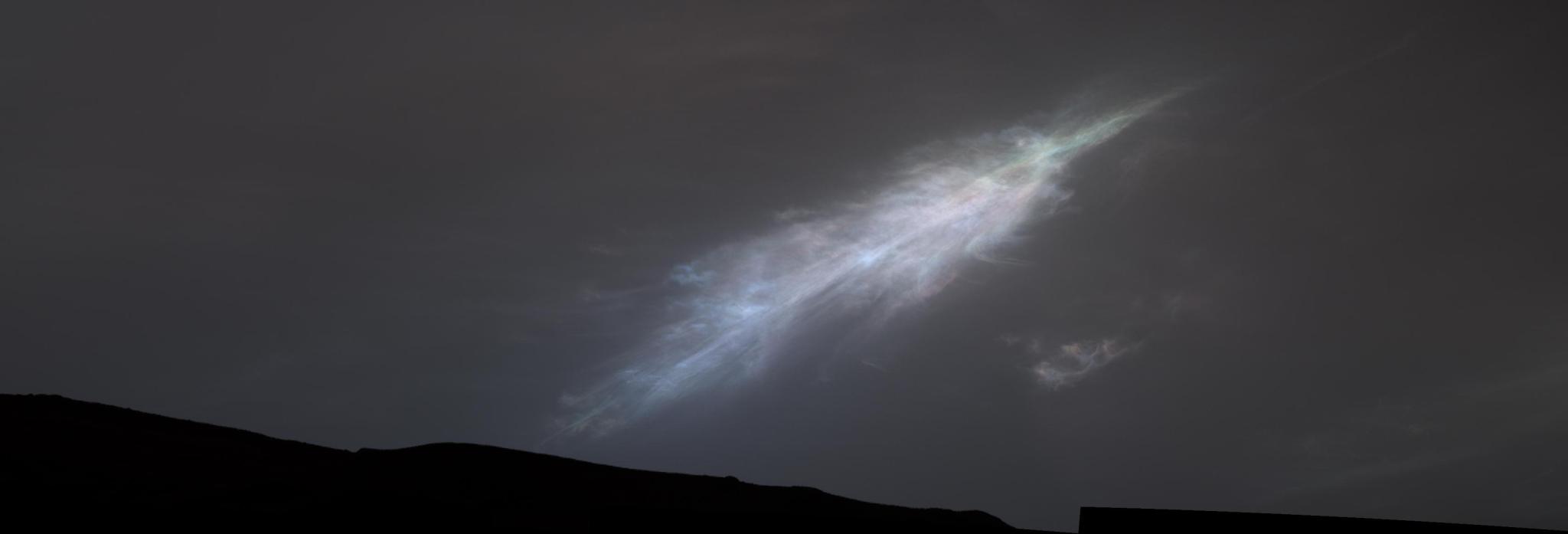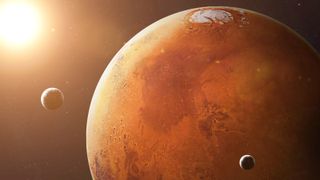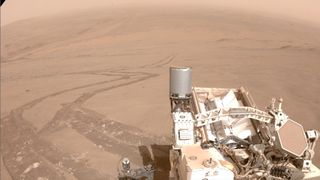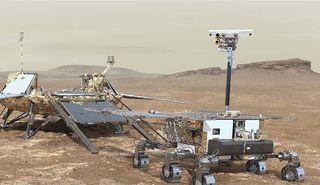NASA/JPL-Caltech/Texas A&M/Cornell NASA’s Mars Exploration Rover Spirit captured this stunning view as the Sun sank below the rim of Gusev crater on Mars 20 years ago. In this image, the bluish glow in the sky above the Sun would be visible to us if we were there, but an artifact of the panoramic camera’s infrared imaging capabilities is that with this filter combination, the redness of the sky farther from the sunset is exaggerated compared to the daytime colors of the Martian sky. Read more about this photo. Image credit:…
Read MoreTag: Mars
Could Mars volcanoes have supported ancient life on the Red Planet? Well, maybe
While most people searching for signs of alien life these days might have their eyes on the exoplanet K2-18b, one team of researchers is keeping their sights a little closer to home. Texas A&M researcher Michael Tice and a team of international scientists have revealed new clues about Mars’ potential to have supported life, thanks to data collected by NASA’s Perseverance rover. Since 2021, Perseverance has been exploring Mars’ Jezero Crater, using its mobile laboratory to support the work of scientists around the world. Tice and his team, in particular,…
Read MoreNew photos from European Mars orbiter show dynamic, volcanic Red Planet terrain
The European Space Agency (ESA) just released some new snapshots from its Mars Express orbiter that detail the dynamic terrain of the Red Planet’s Acheron Fossae region. One of the photos shows trough-like features called “grabens,” which run about 500 miles (800 kilometers), or roughly the length of Germany. They were shaped from ancient volcanic activity that twisted the surface of Mars almost four billion years ago. Flowing lava from the nearby Alba Mons volcano (not pictured) is likely responsible for the smooth region in the bottom center of the…
Read MoreNASA’s Curiosity Rover Detects Largest Organic Molecules Found on Mars
Researchers analyzing pulverized rock onboard NASA’s Curiosity rover have found the largest organic compounds on the Red Planet to date. The finding, published Monday in the Proceedings of the National Academy of Sciences, suggests prebiotic chemistry may have advanced further on Mars than previously observed. Scientists probed an existing rock sample inside Curiosity’s Sample Analysis at Mars (SAM) mini-lab and found the molecules decane, undecane, and dodecane. These compounds, which are made up of 10, 11, and 12 carbons, respectively, are thought to be the fragments of fatty acids that…
Read MoreLife on Mars? It probably looks like something you’d find in your stomach
This article was originally published at The Conversation. The publication contributed the article to Space.com’s Expert Voices: Op-Ed & Insights. María Rosa Pino Otín is a Professor and researcher of Microbiology, Universidad San Jorge We often forget how wonderful it is that life exists, and what a special and unique phenomenon it is. As far as we know, ours is the only planet capable of supporting life, and it seems to have arisen in the form of something like today’s single-celled prokaryotic organisms. However, scientists have not given up hope…
Read MoreIs it time to revisit what NASA’s Viking lander found on Mars in 1976?
Back in 1976, the dual NASA Viking landers came to full stop on the Red Planet. Their life detection experimental findings still reverberate within the scientific community – fueling the on-going discussion on a key question: Is there life on Mars? Fast forward to today, a new paper tackles and reconsiders the results of the Viking Biology experiments. Perchlorate finding The most significant change since those 1970’s experiments were conducted was the discovery of high levels of perchlorate on Mars. Perchlorate, plus abiotic oxidants, explains the Viking results and there…
Read MoreA Rainbow-colored “Feather” in the Martian Sky
NASA/JPL-Caltech/MSSS NASA’s Curiosity Mars rover captured this feather-shaped iridescent cloud just after sunset on Jan. 27, 2023. Studying the colors in iridescent clouds tells scientists something about particle size within the clouds and how they grow over time. These clouds were captured as part of a seasonal imaging campaign to study noctilucent, or “night-shining” clouds. A new campaign in January 2025 led to Curiosity capturing this video of red- and green-tinged clouds drifting through the Martian sky. Learn more about iridescent twilight clouds on Mars. Image credit: NASA/JPL-Caltech/MSSS
Read More‘Marsquakes’ may solve 50-year-old mystery about the Red Planet
Recordings of Martian earthquakes, or “marsquakes,” collected by a robot on the Red Planet may have finally solved a 50-year-old mystery: why one half of Mars is so drastically different from the other. Since the 1970s, researchers have known that Mars is split into two main areas. The northern lowlands cover around two-thirds of the planet’s northern hemisphere, while the southern highlands cover the rest of the planet and have an average elevation roughly 3 miles (5 kilometers) higher than that of the northern lowlands. Mars’ crust, which sits on…
Read MoreMars was hot then cold then hot again. Could life have really survived there?
New research suggests that temperatures on ancient Mars may have fluctuated between hot and cold periods through a relatively short period during its lifetime of billions of years. But these hot and cold spells may have been detrimental to life if it existed on the Red Planet. Mars may be a dry and arid planet today, but scientists know that Earth’s neighbor was much wetter and much more like our planet in its ancient past. These new findings from a team of researchers at the Harvard John A. Paulson School…
Read MoreMysterious Mars mounds may bolster case for ancient Red Planet ocean
Thousands of hills and mounds on Mars have been found to contain layers of clay minerals, which formed when running water interacted with the rocks during a period when Mars’ northern reaches were flooded. “This research shows us that Mars’ climate was dramatically different in the distant past,” Joe McNeil of the Natural History Museum in London said in a statement. “The mounds are rich in clay minerals, meaning liquid water must have been present at the surface in large quantities nearly four billion years ago.” Mars is a planet…
Read More